Prolonging the Lifespan of Custom Pieces
When you reach out to us for a custom furniture design, you can rest assured that we have the knowledge and ability to create pieces at the intersection of beauty and functionality. But how will these pieces hold up long after we’ve installed them? We see custom furniture as a long-term investment in your comfort, which is why we care about educating our clients on the materials we use. With proper care, our furniture solutions can withstand the test of time and serve you well for many years. We have shared our expertise on a variety of popular materials in the furniture care guide below. Learn more about each material’s unique characteristics and special care requirements to prolong the lifespan of your custom furniture.
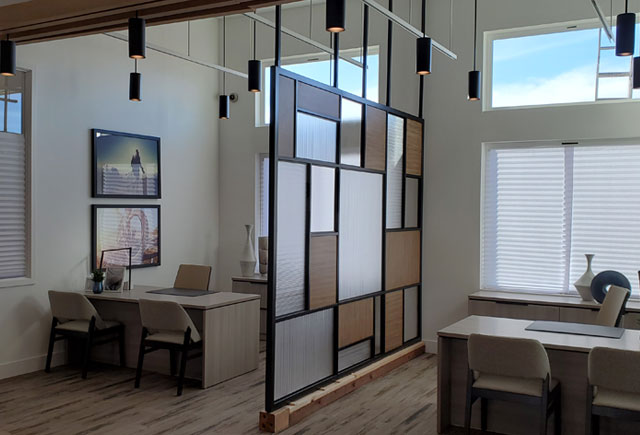
Common Materials
If you’re just jumping into the world of custom furniture design, the amount of choices can be overwhelming. Our team is here to simplify the material selection process by helping you make informed decisions. Here are a few of the most common materials that we use, along with their respective properties:
Laminate: Known for their durability and versatility, most laminates are crafted from layers of resin-treated paper. They come in various colors and patterns that often mimic the appearance of natural materials, such as wood and stone. They are highly resistant to scratches and stains, making them ideal for high-traffic areas and work surfaces.
Veneer: This refers to a thin layer of real wood applied to a base material, like plywood or particle board. Veneers offer the beauty of natural wood grains and patterns, while providing better stability and a more cost-effective price. They are available in a variety of wood species, including oak, walnut, and mahogany. Check out our blog on what to know about wood veneers for more information about specifying this material.
Solid Surface: Solid surfaces, which are popular for countertops, offer excellent durability and versatility as well. They include materials with an organic look, such as quartz, granite, marble, and other natural stones. Each offers their own unique aesthetic and functional properties.
Metal: This is another strong and durable material. Options range from sleek and modern designs to rustic and industrial styles. Common metals used for furniture include steel, aluminum, and wrought iron.
Glass: Glass is a great material choice to elevate your custom furniture design. It is very adaptable to different aesthetics, as it can be completely transparent, frosted, or textured to coordinate with your space. Just remember that it is also much more fragile than the materials previously discussed.
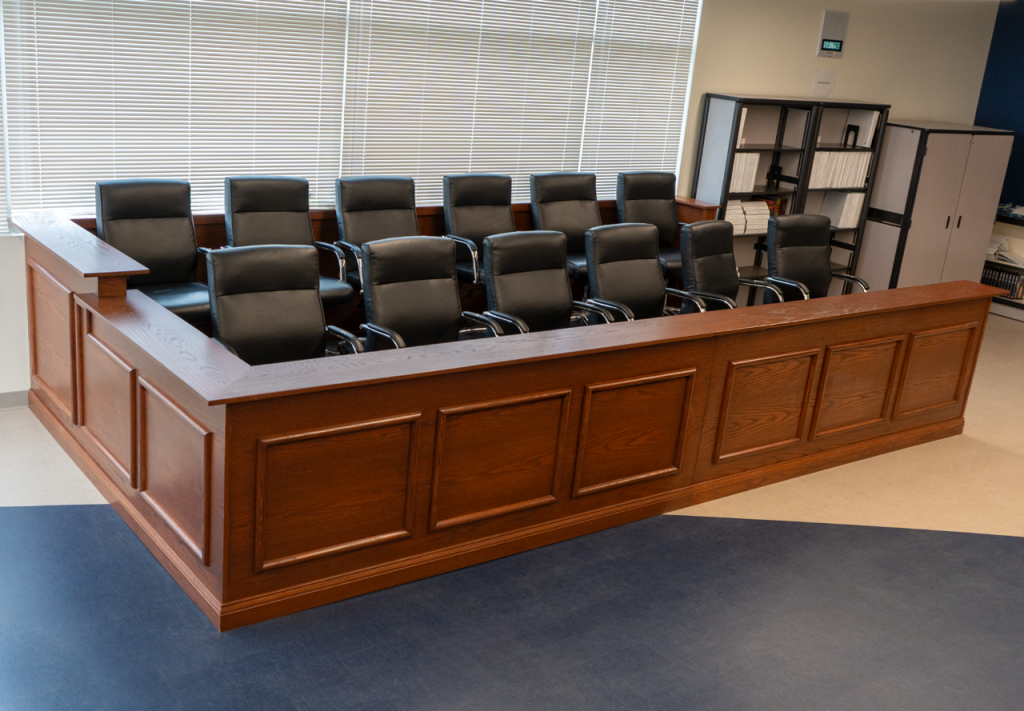
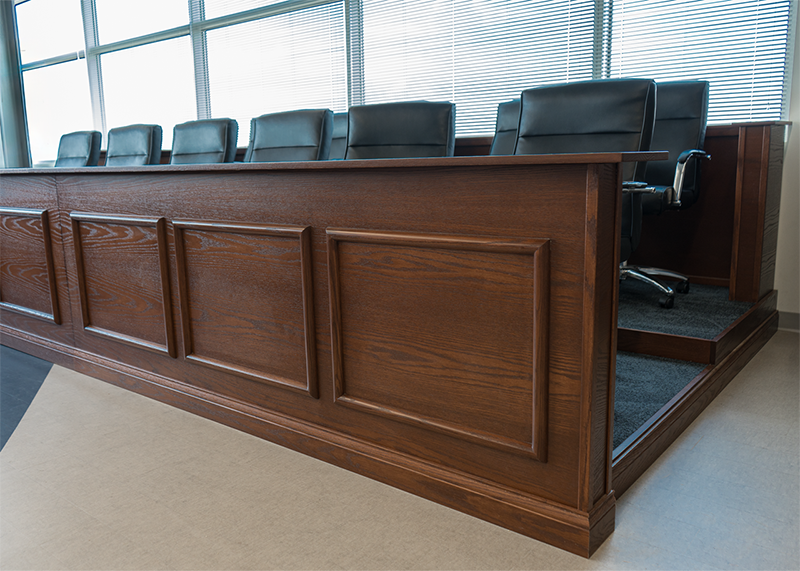
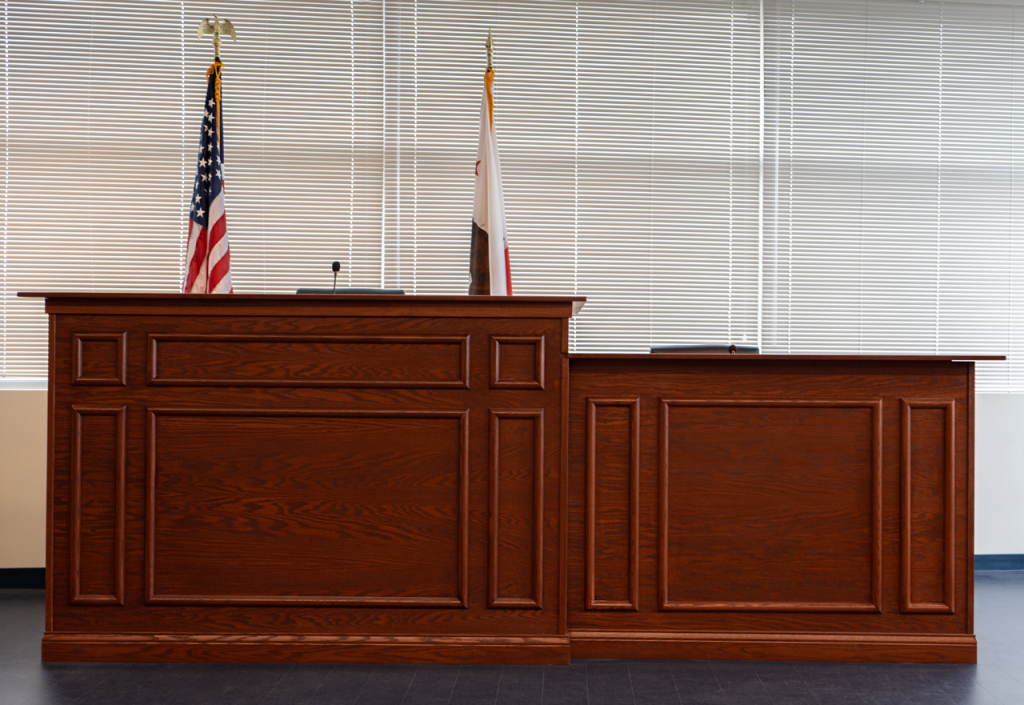
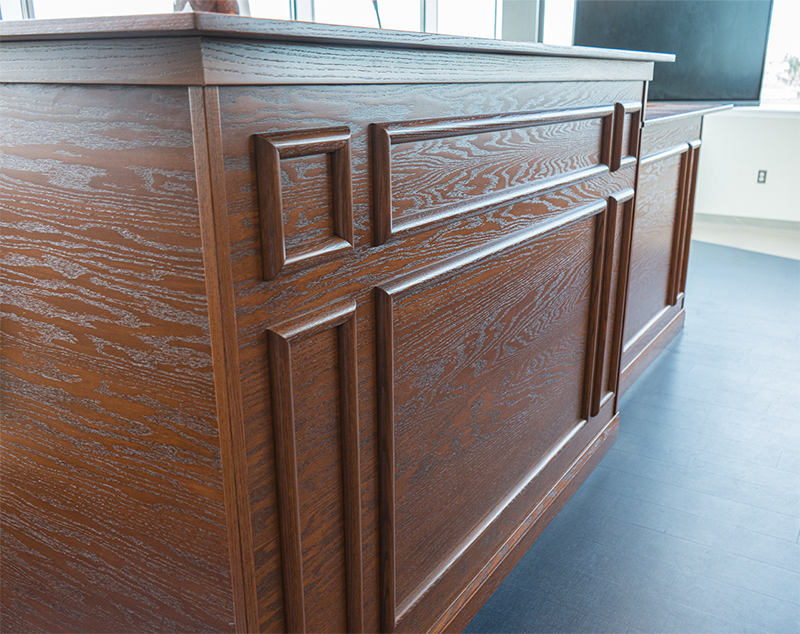


Cleaning and Maintenance
For most of these materials, cleaning and maintaining them is relatively straightfoward. A soft feather duster can be used to remove loose particles. You can use a soft sponge or cloth with mild soap and warm water to remove other debris and stains on any of these surfaces. Water can cause metal to rust, solid surfaces to spot, and wood veneer to warp, so be sure to dry furniture thoroughly when you’re finished. Avoid abrasive cleaners, scrub brushes, and harsh chemicals to prevent damage.
For tougher stains, laminate may be spot cleaned with organic solvents, such as alcohol, acetone, ketone, lacquer thinner or paint solvent. Be sure to use these solvents with care, keeping the solution away from surface edges, as it may deteriorate contact adhesives used to bond the laminate sheet to its substrate. Wood cleaner is another suitable option for veneer, but steer clear of silicone-based cleaners. They prevent the wood from “breathing.” Be sure to follow the direction of the wood grain, too. You can also use a soft cloth with a commercial glass cleaner, or a mixture of vinegar and distilled water, to clean glass.
Storage
It’s not only essential to clean materials properly, but also to store them properly. Whenever possible, furniture should be stored in a dry, climate-controlled environment out of direct sunlight. Excessive heat and humidity can cause laminate to warp. If you must store it in a humid environment, consider using a dehumidifier to reduce the amount of moisture in the air. Veneer requires an even more controlled temperature, as very humid or dry conditions can cause the wood to shrink, swell, or crack.
Metal furniture and solid surfaces should be protected from harsh weather conditions and stored in a dry, covered area. It may be tempting to stack metal chairs to save space, but we do not recommend it. Metal scratches easily when it comes into contact with another surface. Glass furniture is the most fragile of all, so it should be stored flat or with protective padding to prevent breaking and chipping. Avoid stacking heavy objects on it.

Preventive Care
Preventive care is crucial for maintaining the appearance and functionality of furniture made from these materials as well. Use coasters, placemats, tablecloths, felt pads, and furniture glides to protect furniture from scratches. For wood veneer furniture, the compounds in some plastics can be detrimental to wood finishes, causing cloudiness or imprints. To prevent this, use only felt or leather desk pads on work surfaces – never one with a plastic backing. Avoid leaving plastic folders or binders on wood veneer furniture as well.
It is important to note that the color of wood is affected by light, which causes it to change color through a process known as “mellowing.” All wood species are subject to this effect, but they may lighten or darken depending on the species. To make sure that the wood changes color evenly, we recommend periodically moving objects and accessories on the surface of wood veneer furniture.
Keep in mind that some of the materials we have discussed can be quite heavy, so it is best to lift furniture with care when transporting it. Be sure to inspect each piece regularly. Any signs of damage or wear should be addressed promptly to prevent further deterioration.
You can apply a protective coating to preserve your furniture. Laminates can be covered with a sealant, such as polyurethane from Minwax or Varathane, every few years to enhance durability. For veneer furniture, be sure to apply furniture polish or wax periodically. Solid surfaces usually require a sealer, as natural stone is a porous surface. If it has been exposed to water, metal furniture may need to be treated for rust and corrosion with a rust remover or converter. After it has been treated, painted metal furniture can be refinished with a fresh coat of paint. Applying a clear coat or paste wax provides some water resistance, which will help to prevent oxidation and corrosion.
Preventive care can certainly prolong the lifespan of your custom furniture, but it still helps to have an additional safety net as well. One of the advantages of working with our team at DTANK+ is that we offer a ten-year warranty on all our products. In the unlikely event that you do find a defect with the materials or craftsmanship of your custom furniture piece, we will repair or replace it at no extra cost to you. This is how we show our dedication to customer satisfaction and products of the highest quality.
While this furniture care guide is meant to help you get a better sense of the most common materials that we use, feel free to reach out to us if you need support beyond this guide. Our goal is to equip you with the confidence to make informed decisions about your furniture needs. When you work with our team, you’re not just investing in beautiful pieces for your space – you’re investing in longevity and quality.


